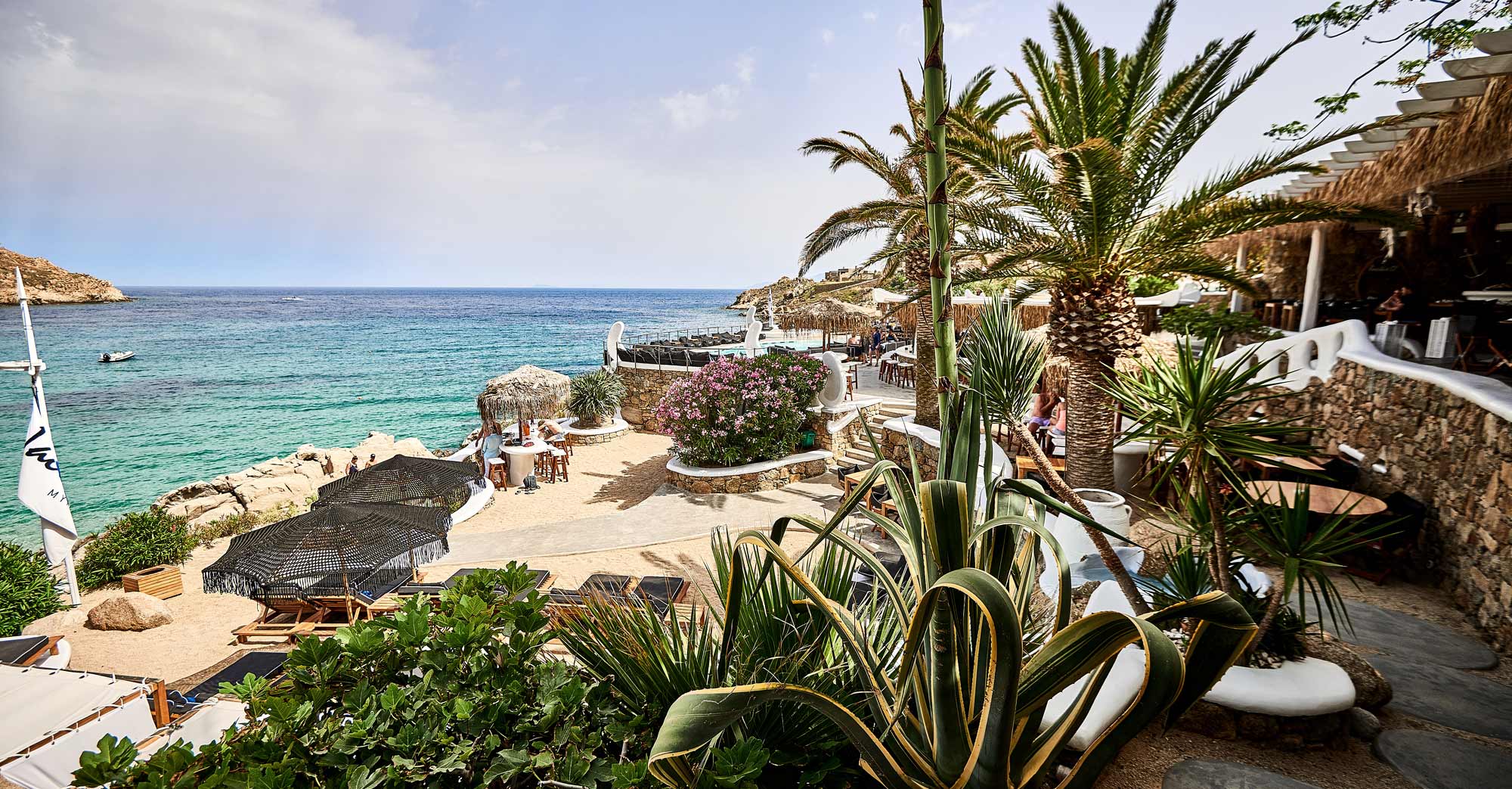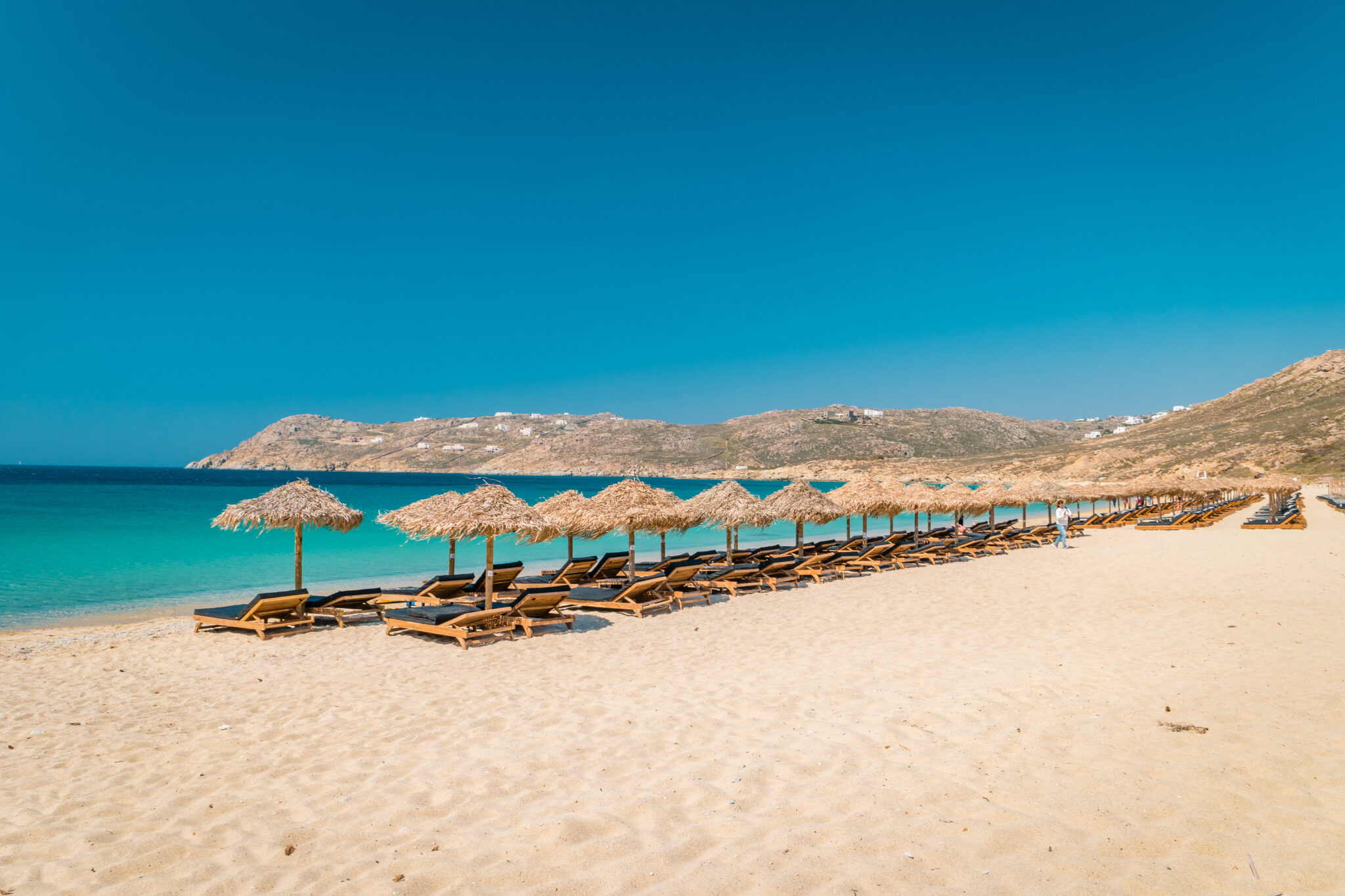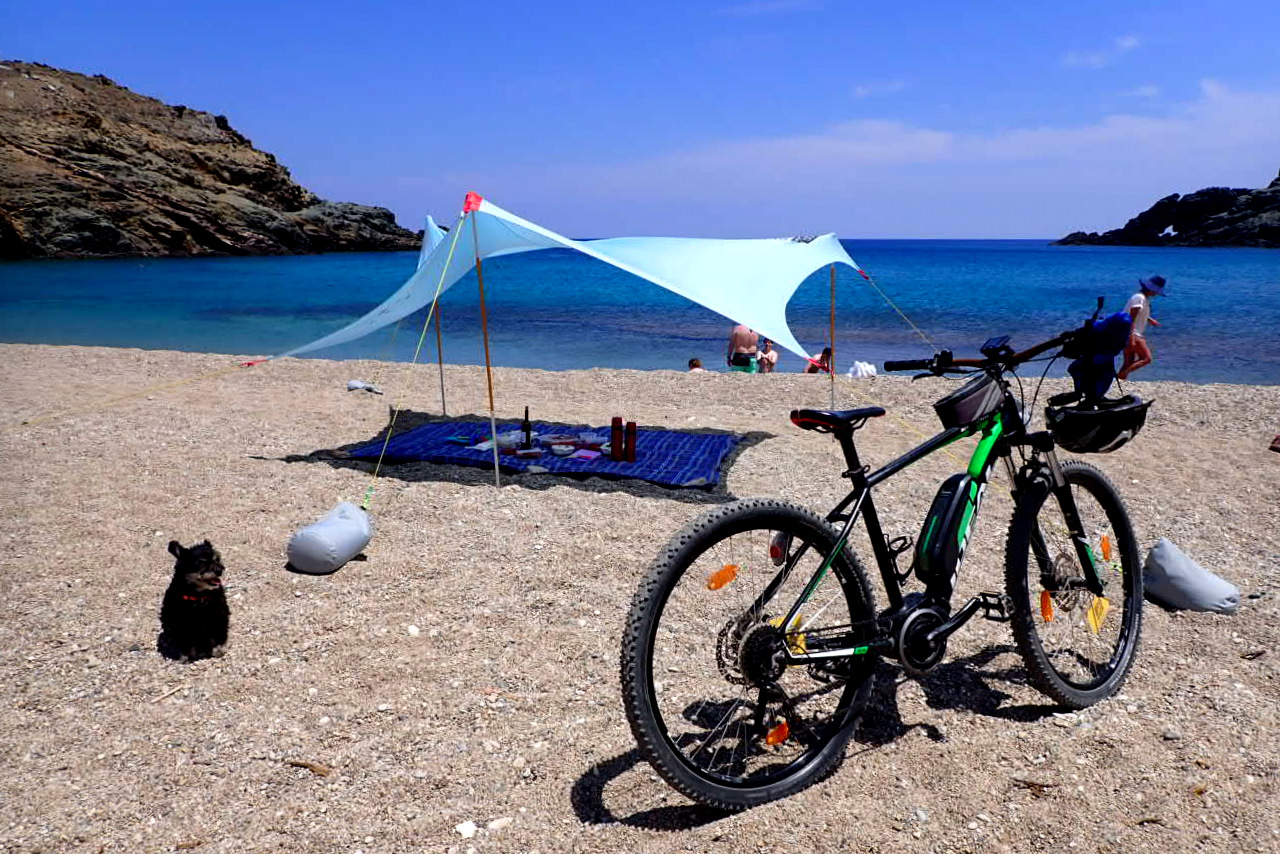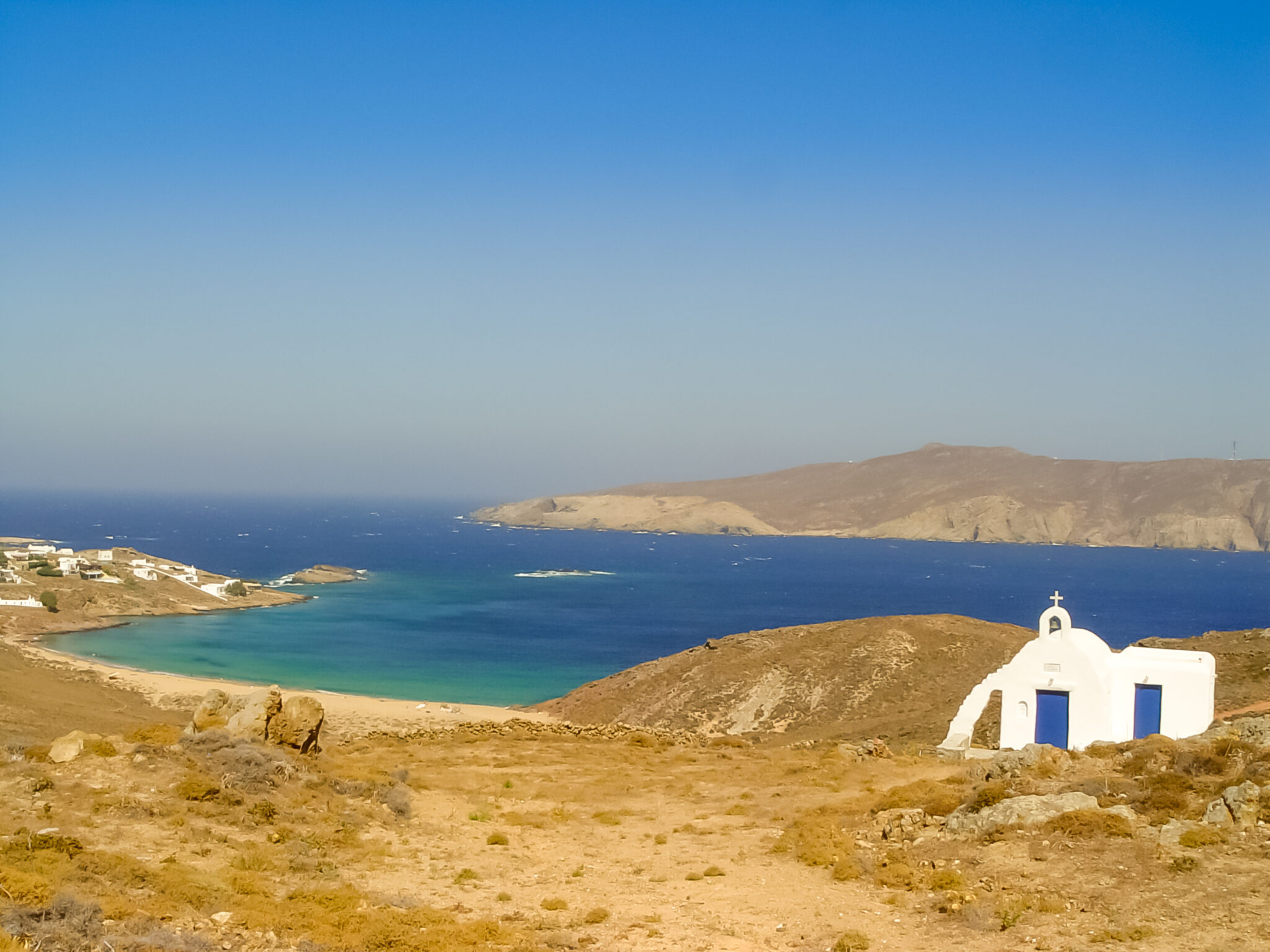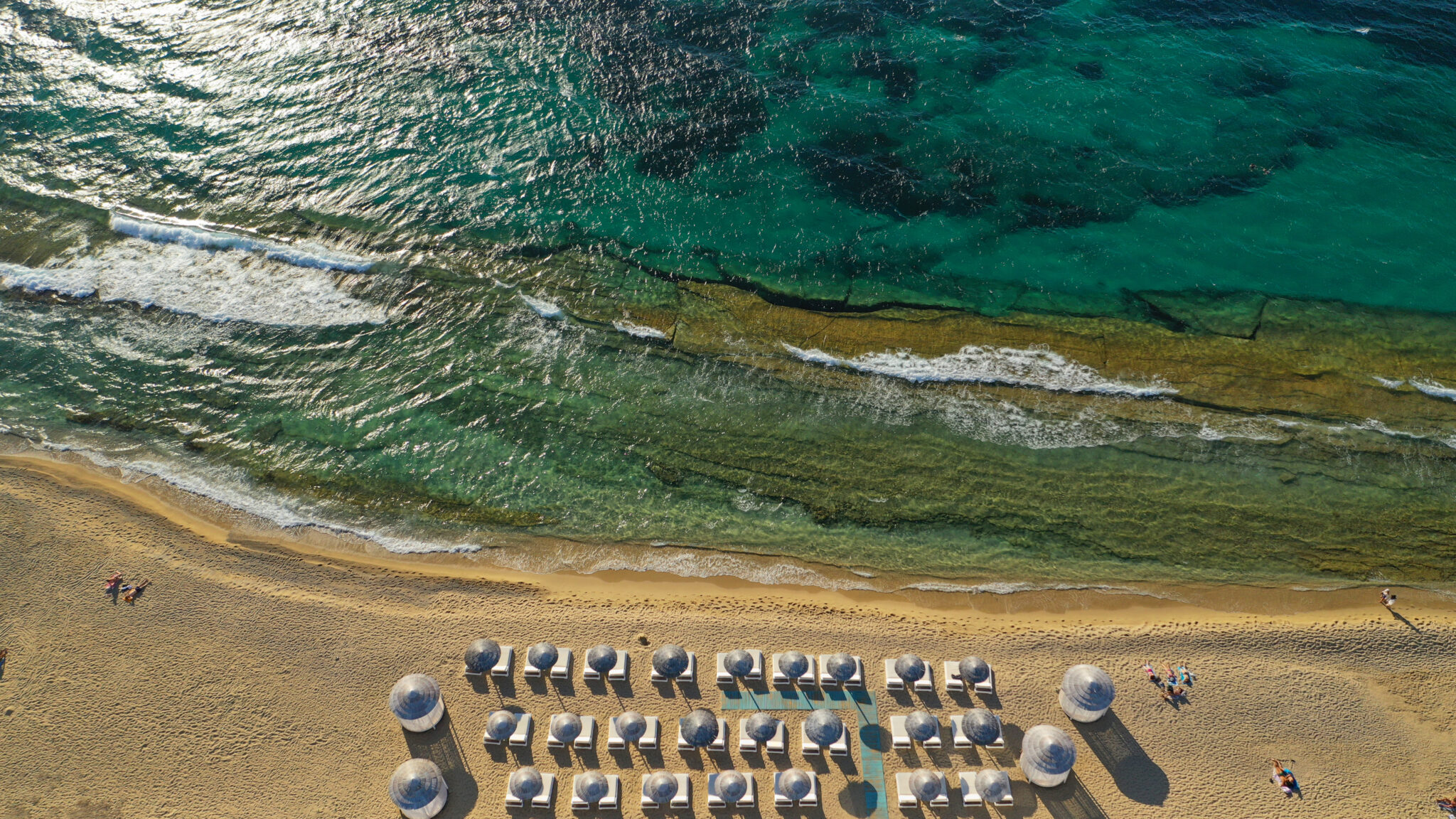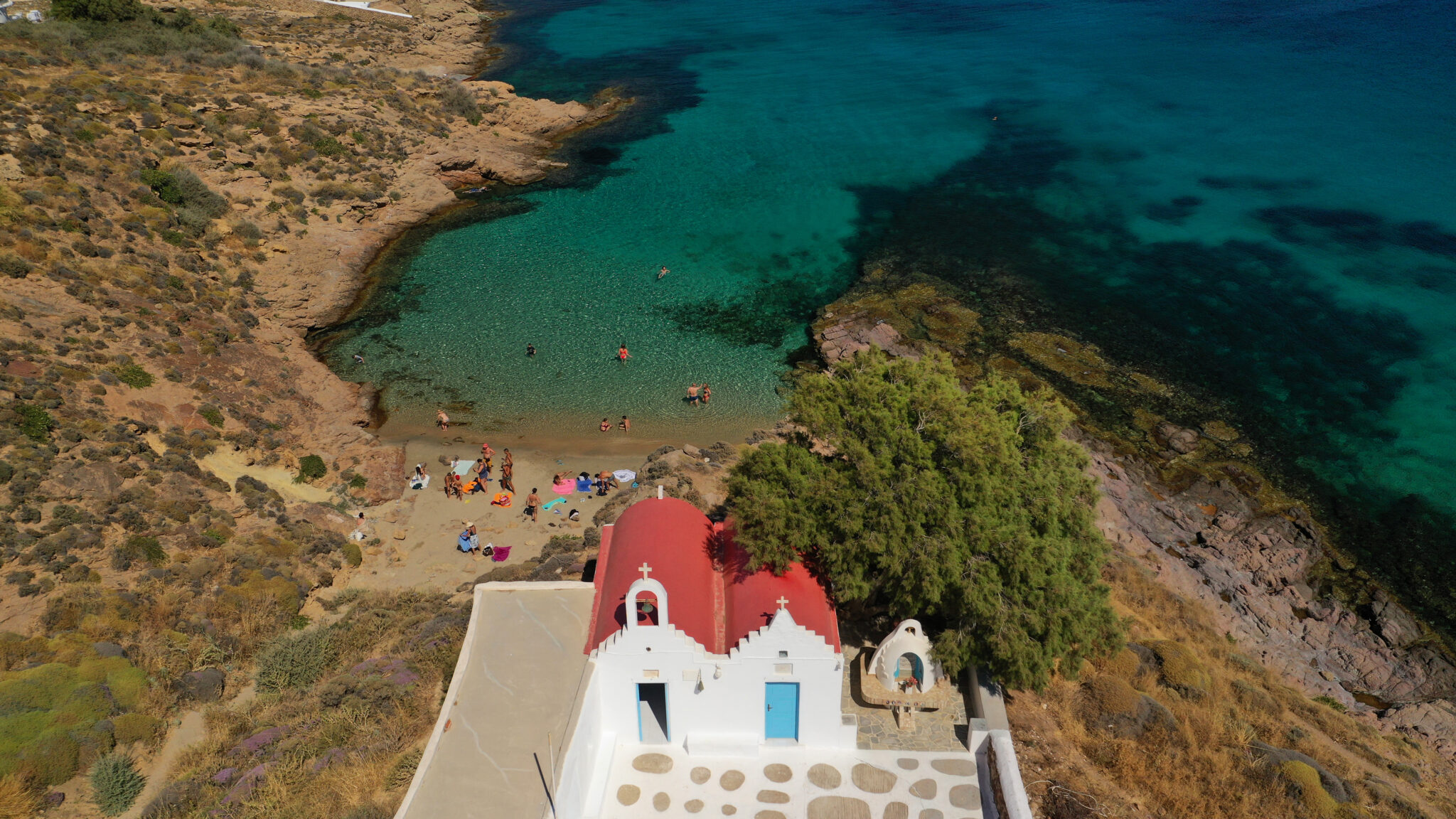Plentiful and blessed with fine sand and clean waters, the beaches were part of the initial attraction that drew visitors to the island. Later in the 1960’s the hippies found refuge on a long strip of coast where they could camp and sunbathe in the nude. A haven of tolerance and difficult to get to, its reputation spread by word of mouth and the name they gave it – Paradise. The initial pioneers would not recognise the daybeds and pillows, the Champagne, the gourmet menus, and booming beach bars that proliferate the island shores, but Mykonos now attracts a clientele determined to see and be seen, insistent upon having the best time at whatever cost.
Luckily, the coastline is big enough to cater for all tastes and there are beaches for partygoers, gay friendly beaches, family beaches, town beaches, beaches for water sports, and out-of-the-way coves for those seeking solitude. Most have golden sand, some have pebbles, some are backed by steep cliffs; but all are fronted by the refreshing Aegean and remind why Mykonos is known throughout the world.
The North Coast
Agios Sostis was one of the beaches loved by nudists in the 60’s and 70’s. Today the unspoiled vibe continues with no infrastructure and little natural shade – come prepared. Despite the northern location, it remains sheltered and there is a very popular taverna nearby, Kiki’s that visitors make a special journey to. Access is by car only, with parking a 10 minute walk away.
Panormos was once deserted but the introduction of a bus service has opened it up to visitors. Popular with nudists for peace and quiet on the right hand side, to the left is an expensive beach bar, Principote, that plays loud music. Due to its location, it can be a little windy and the waves stronger than on the southern beaches.
Fokos is nearly always deserted apart from a handful of nude sunbathers. Small, beautiful and framed by rocks, It has sand and deep waters that may be quite choppy due to the wind. There is no tourist infrastructure, only a traditional tavern and the only access is by car along a dirt road. The next cove is Mersini, even more secluded with nothing there whatsoever.
Ftelia worships the winds, making it a favourite of windsurfers and kitesurfers, but it also keeps everyone else away. Due to the wind, umbrellas and chairs are restricted to a small section of the beach by the bar. A Neolithic settlement has been excavated in the area, and the beach is an easy 20 minute drive from Chora.
Near to Chora
Megali Ammos and Ai-Haralambis are the closest beaches to town. As its name suggests, Megali Ammos is quite long, but it does get busy. Ai-Haralambis is a little further north, behind the windmills and is the choice of those who who want to take a dip without leaving the capital.
Agios Ioannis, also known as Shirley Valentine beach after a 1980’s British film, is organized with sunbeds and umbrellas and has a nice view of Delos. It attracts foreign and Greek visitors from neighbouring Ornos and the shallow bay is popular with families. There are taverns, hotels and bars in the small whitewashed outpost that has grown around the beach.
Agios Stefanos is a 45 min walk from Chora at the northern end of the bay of Tourlos. Surrounded by
taverns and hotels, it has sunbeds and umbrellas and a nice sunset view. Its sheltered shallow waters attract families.
Kappari is one of the most beautiful and quiet beaches on the island. It is located relatively close to
Ornos but tends to be mainly used by locals. Small, with fine sand and no infrastructure, it is surrounded by rocks for diving. 5 km from Chora, there are views across to Delos but be careful on the short downhill walk to the beach.



